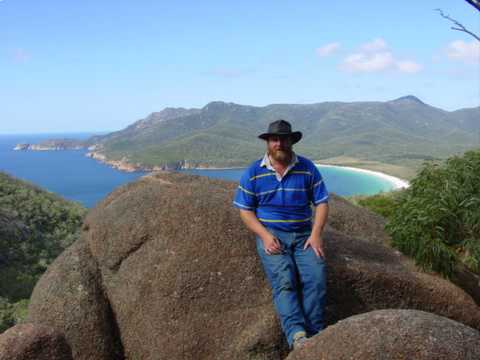acep - 3 About Stereotypes
One of the topics of discussion on day 1 was something like: "think about what you think an Aboriginal whould look like". Then the group was asked to tell the rest what they thought.
Most people had in their mind something like the "typically scrawny or athletic, dark skinned, curly-haired native in loin cloth" as so often shown in early colonial art works. These are the images, often taught at school in social studies up to the mid 1970's, that have shaped for many what an Aboriginal should look like.
How far off the mark is this?
OK, so the there may be a couple like this, but the person can be as different our 2 facilitators. There is no one size fits all desciption. I had trouble with the question, as I have worked with, taught and known Aboriginal people from all over Australia. I could not come up with single image. But then I have had the opportunity to work in much of this country with many different people.
Consider the differences between Lionel Rose (boxer) and Evonne Cawley (tennis player) as an example. I only know the former from images in the newspapers, etc, but I know Evonne Cawley, not just through the media, but from personally meeting her in 1976. One just an image, the other, a larger than life person. Sitting, writing this I recall the tragic comment often used by commentators about her when she was struggling in a match: "could she hold it together or would she go walkabout?" 30 years on, I find it such a horrible thing to say, displaying an ignorance we need to educate people away from.
Many people I know have not left the "safety" of their own environment, so have not been exposed to the diversity of people I have seen around Australia.
Their view of the Aboriginal is that displayed by their teachers, and by the media in its various forms.
Today, I stumbled across this article in the Sydney Morning Herald. "It was about the World Press Photo of the year, by Spencer Platt, of Getty Images, which has become 'controversial' since it was announced. The problem, it seems, is that the image is not what everyone wants it to be ..." The article "its_all_in_your_mind" is worth a read. But after you get to the page, look at the image. What is it about? Consider this before you read the article .
It seems stereotyping is alive and wellBook of the day: Blood on the Wattle: Massacres and Maltreatment of Aboriginal Australians Since 1788, 3rd Edition; Bruce Elder; isbn: 174110008-9
Thought for today: stereotypes have no place in dealing with people and cultures

No comments:
Post a Comment